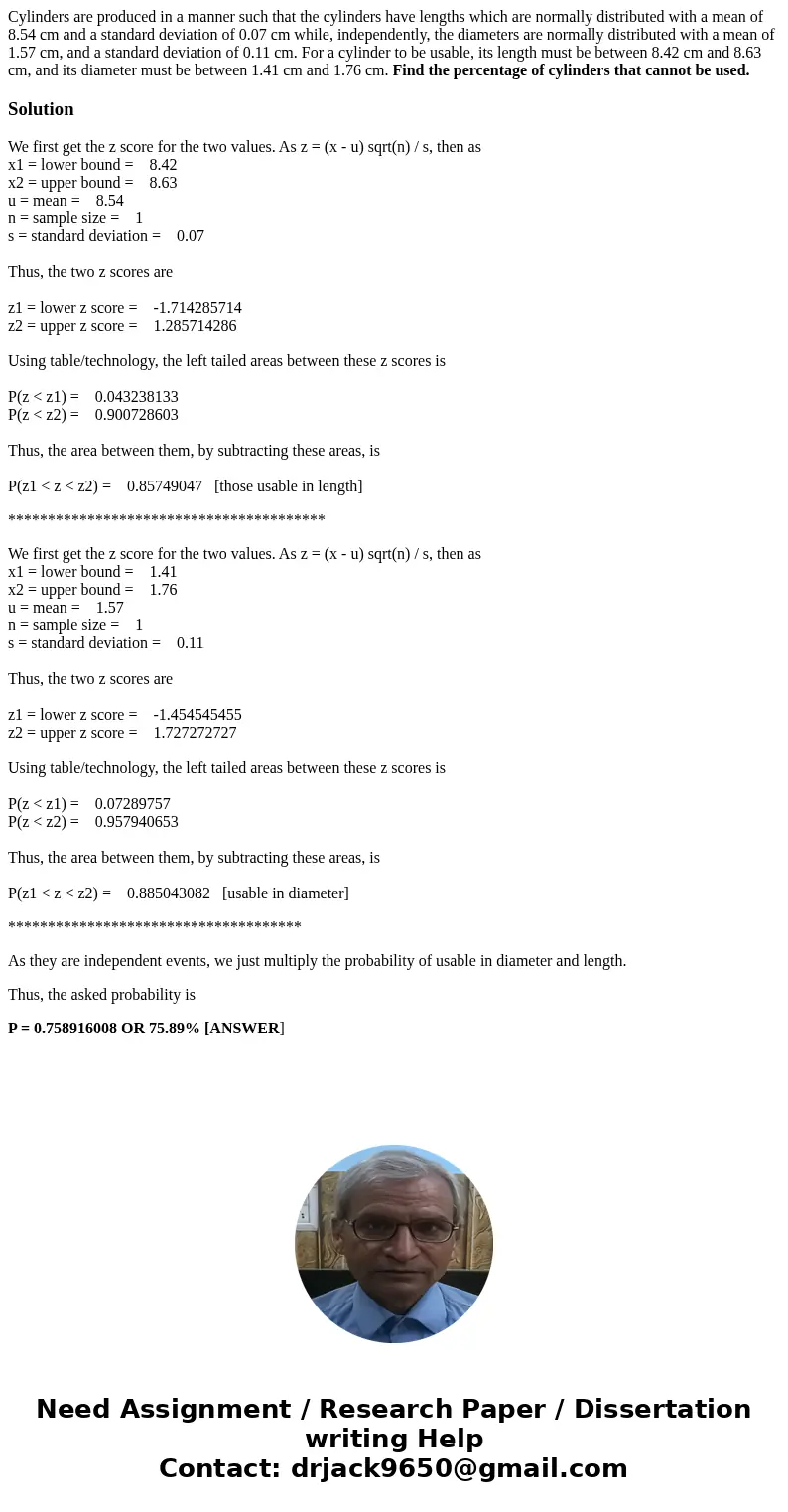Cylinders are produced in a manner such that the cylinders h
Cylinders are produced in a manner such that the cylinders have lengths which are normally distributed with a mean of 8.54 cm and a standard deviation of 0.07 cm while, independently, the diameters are normally distributed with a mean of 1.57 cm, and a standard deviation of 0.11 cm. For a cylinder to be usable, its length must be between 8.42 cm and 8.63 cm, and its diameter must be between 1.41 cm and 1.76 cm. Find the percentage of cylinders that cannot be used.
Solution
We first get the z score for the two values. As z = (x - u) sqrt(n) / s, then as
x1 = lower bound = 8.42
x2 = upper bound = 8.63
u = mean = 8.54
n = sample size = 1
s = standard deviation = 0.07
Thus, the two z scores are
z1 = lower z score = -1.714285714
z2 = upper z score = 1.285714286
Using table/technology, the left tailed areas between these z scores is
P(z < z1) = 0.043238133
P(z < z2) = 0.900728603
Thus, the area between them, by subtracting these areas, is
P(z1 < z < z2) = 0.85749047 [those usable in length]
****************************************
We first get the z score for the two values. As z = (x - u) sqrt(n) / s, then as
x1 = lower bound = 1.41
x2 = upper bound = 1.76
u = mean = 1.57
n = sample size = 1
s = standard deviation = 0.11
Thus, the two z scores are
z1 = lower z score = -1.454545455
z2 = upper z score = 1.727272727
Using table/technology, the left tailed areas between these z scores is
P(z < z1) = 0.07289757
P(z < z2) = 0.957940653
Thus, the area between them, by subtracting these areas, is
P(z1 < z < z2) = 0.885043082 [usable in diameter]
*************************************
As they are independent events, we just multiply the probability of usable in diameter and length.
Thus, the asked probability is
P = 0.758916008 OR 75.89% [ANSWER]

 Homework Sourse
Homework Sourse